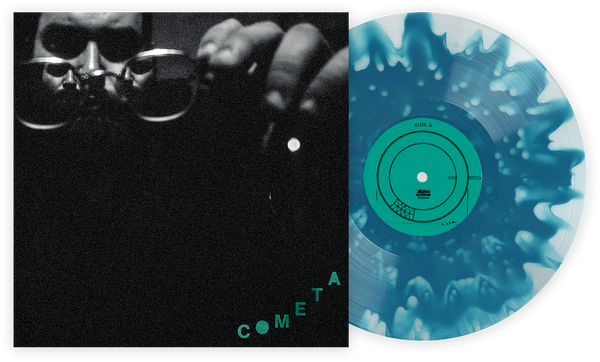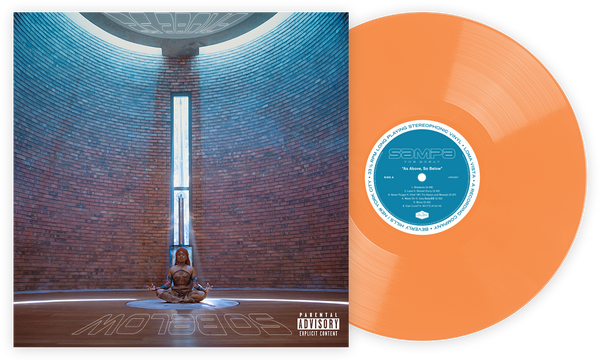A Carl Craig Primer
The Essential Releases From The Detroit Techno Legend
Frequently cited as one of electronic music’s most fervent innovators, and the lynchpin of Detroit techno’s “second wave,” Carl Craig took the original blueprint of techno, created by pioneers like Juan Atkins and Derrick May, and helped transform dance music into the outward-facing global phenomenon it is today. Continually experimenting, Craig has approached techno with influences from jazz, neo-soul, classical and non-Western music, and has never been shy about collaborating widely — whether it be with orchestras and studio collectives on albums like Innerzone Orchestra and The Detroit Project, or with some of his heroes like Derrick May, who released Craig’s first ever professional recording, 1989’s “Neurotic Behaviour.” In 1991, Craig launched the Planet E label, and over the course of its 25+ year history, it has buoyed the musical output of numerous Detroit figures, most notably Moodymann, whose dust-spackled house opus “Silentintroduction” quietly influenced an entire generation of producers.
While some figures from techno’s origin narrative have been notoriously coy with releases over the past 30 years, Craig has been satisfyingly present, releasing countless albums and remixes — a style in which he truly excels. He’s taken the editing knife to tracks by bands like The Pet Shop Boys and Foals, as well as club contemporaries such as Theo Parrish. His tension-filled, barrelling take on Junior Boys’ “Like A Child” infamously missed out on a Grammy win, pipped at the post by a truly bleak reimagining of Public Enemy’s “Bring The Noise” by Italian electro peddler Benny Benassi.
Craig’s musical palette reaches from the most heartbreaking soul of Motown to the most brain-melting techno of a motor city warehouse, so a deep dive into his catalogue will reveal new surprises every time, even for the most tenacious of diggers. With the cash-bloated bubble of EDM now somewhat obscuring dance music’s uncompromising Midwestern origins, it’s your duty as a music fan to get caught up on the true source of this now global industry, and there’s arguably no better Detroit artist to begin with than the man with a million aliases. We’ve selected a number of key albums for you to get started.
Landcruising
In the late ’80s and early ’90s, during techno’s early explosion, the format of choice was the 12” single. Like disco before it, the genre’s physical form was dictated by its role as a tool for DJs to play in nightclubs. Techno at its heart is functional music, so most attempts at the traditional album format rarely felt like anything more than collections of single tracks. Following a slew of groundbreaking 12” releases under a rotating cast of aliases, there was no one better placed at upending the tradition than Craig. With his debut album, he brought a thematic and aesthetic cohesion to the techno album format. Bookended by the clunking mechanical sounds of a car door opening and shutting Landcruising is a moonlit ride down open roads that owes just as much to the European avant-garde electronics of Kraftwerk and Vangelis as it does to Craig’s contemporaries. Unlike techno artists who may have embraced dystopian themes inspired by Detroit’s urban decay, there’s an optimism to the future Craig presents on this record. It’s a glittering, highly advanced new world for you to explore.
More Songs About Food And Revolutionary Art
In 1992, Warp Records released its seminal Artificial Intelligence compilation, which collected and contextualized a then-nebulous array of artists who were deconstructing the component pieces of dance music, and reassembling them for home listening, primed for the CD generation. His own take on headphone dance music, More Songs About Food And Revolutionary Art puts Craig’s synth chops front and centre. Melodic motifs stretch and warp over 6- or 7-minute tracks, anchored by unpredictable and at times entirely absent drum programming.
The album’s sleeve doubles as a brief artist statement, printed in floaty serif script: "Revolutionary art is determined… by how much it revolutionises our thinking and imagination; overturning our preconceptions.” With More Songs Craig managed to not only push the boundaries of Detroit techno, he also introduced an urgency and melodic richness to the sometimes navel-gazing world of IDM.
Paperclip People: The Secret Tapes Of Dr. Eich
For most people, the worlds of office supplies and classic Detroit house music rarely, if ever, intersect. For others, though, there’s this album. On The Secret Tapes Of Dr. Eich, a collection of 12 tracks lifted from previous singles and EPs from the early ’90s, Craig hosts some of the most rambunctious and dance floor-ready material of his career. Covered by bands like LCD Soundsystem, this collection sits at the groovier end of Craig’s oeuvre, with highlights like “Throw,” “Steam” and “The Climax” banging out like Kraftwerk and Hamilton Bohannon collaborating in a parallel universe. The disco sampling, loop heavy direction of the Paperclip People project is a spiritual precursor to Daft Punk’s incendiary debut “Homework,” despite Craig’s conspicuous absence from the album’s classic shout out-laden jam “Teachers.”
The Detroit Experiment: The Detroit Experiment
Pursuing the footsteps of Detroit’s studio boffin perfectionists past and present, Craig acts as the creative centre for this project, overseeing some of the city’s most supremely talented session musicians from the worlds of jazz and funk. One time Herbie Hancock collaborator Bennie Maupin is on the roster, as well as rising motor city talents Karriem Riggins and Amp Fiddler. Describing the experiment himself as “a group mentality produced by me,” Craig arranges sections and tightens up loose, improvised jams, adding tasteful atmospherics and studio inventiveness to hip-hop, gospel and soul eclecticism. Crucially, the album is rubbed with a grit and rawness that it’s coffee shop jazztronica contemporaries sorely lacked.
Carl Craig & Moritz von Oswald: Recomposed Vol. 3
One of the more fruitful transatlantic friendships birthed between the twin cities of techno — Detroit and Berlin — is the one between Craig and dub techno pioneer Moritz von Oswald. On Recomposed Vol. 3, Craig and Oswald step out of the strictures of dance music and step into the world of contemporary classical, rearranging and reimagining Ravel’s Bolero and Mussorgsky’s Pictures at an Exhibition, as performed by the Berlin Philharmonic Orchestra, for the 21st Century. The album’s two movements fluctuate between shimmering orchestral ambience and the stark, hypnotic, minimalism of Glass and Reich, with the whirring engine of drum machines dutifully keeping pace.
Carl Craig & Green Velvet: Unity
For the most part, Craig’s collaborative efforts have involved him reaching beyond the confines of dance music, searching for more esoteric sources of inspiration, whether it be the clean modern lines of minimalism, or the rhythmic density of jazz. But on 2015’s Unity, created with notorious Chicago house party starter Green Velvet, he returned to the nightclub with wild abandon. Introducing themselves in the intro as “two captains from two worlds… from the outer reaches of the galaxy” the Detroit via Chicago via outer space tag team then proceed to deliver eight immaculately produced, hypnotic club tracks, designed for dancing late into the night, in front of very large sound systems.
Niall McKenna is an Edinburgh-based freelance writer and dance music nerd. If you find him in the wild he'll be holding a pint or harassing a dog owner or doing both simultaneously.
Related Articles
Join the Club!
Join Now, Starting at $44Exclusive 15% Off for Teachers, Students, Military members, Healthcare professionals & First Responders - Get Verified!








